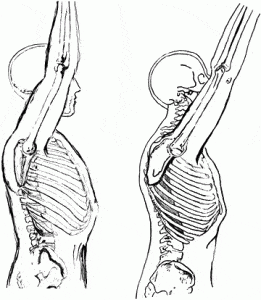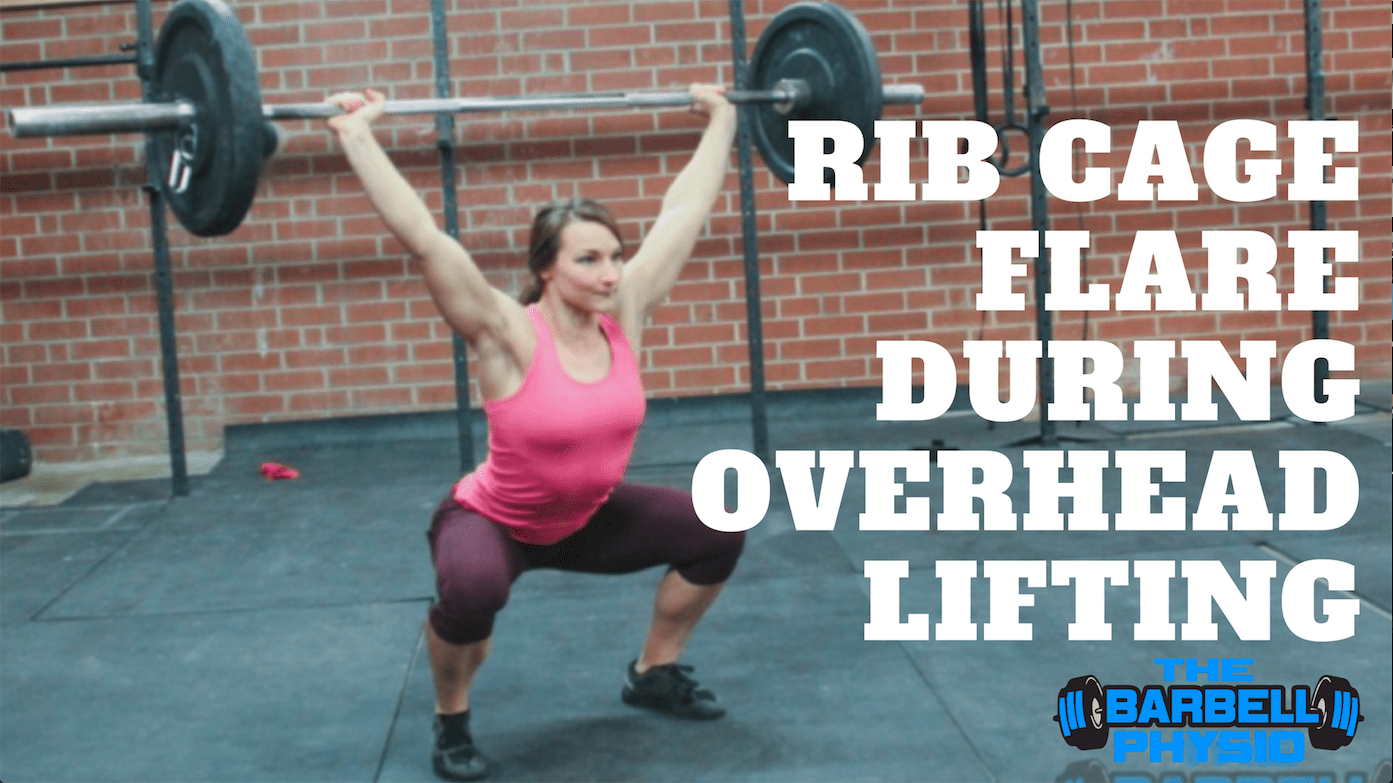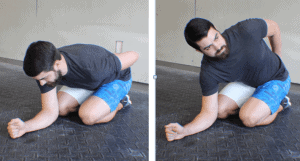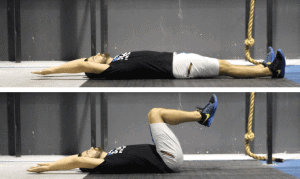Rib cage flare during overhead lifting is a common movement fault seen in fitness athletes. While it is not always an issue, quite often it needs to be addressed for better positioning as an athlete moves weight overhead.

If you aren’t familiar with the term rib cage flare, it is another name for overextension of the spine. This usually occurs around the thoracolumbar junction, where the lower and mid-back meet. It is named rib cage flare because the protrusion of the rib cage is usually the easiest way to spot this movement fault.
View this post on Instagram
Rib Cage Flare Causes
Rib cage flare during overhead lifts are usually caused by either 1) poor movement patterns or 2) lack of mobility, so the athlete must compensate by overextending the spine.
When I address rib cage flaring, I typically start by coaching the athlete to see if we can change positioning while still achieving a full overhead position. If so, we then know mobility is NOT the cause of the rib cage flare. In that case, we want to retrain the movement. Sometimes that involves corrective exercises like the ones I’ll show below. Other times it simply means backing the weights down to more manageable loads that can be moved with proper form.
If cueing does not fix the movement, then we can break out the most common mobility limitations to see what needs to be addressed. Then movement pattern corrections can be addressed.
Mobility Tests for Rib Cage Flare
I typically start with thoracic spine mobility testing using the lumbar locked thoracic rotation test. Begin sitting on knees with your butt on your heels. Place one forearm on the ground and the other behind your back. Rotate towards the up hand. Fifty degrees of rotation should be available in each direction (shoulders relative to the ground).
While the thoracic extension is often to blame, it is important to note that being stuck in thoracic spine extension can also contribute (see this article for more details).
For those needing thoracic mobility help, check out this program.
Up next, we break out the shoulders. Start assessing the shoulders by lying supine and seeing if your shoulders can open up to a full 1800-degrees with the arm resting on the ground. Next, flex the hips to 90-degrees to increase tension on the lats. If the angle changes with the hips up, then tight lats should be addressed. (See this article for shoulder mobility help)
While there are other mobility tests we can do, such as hip flexors for rib cage flaring, these two will cover 90% of what we need to assess.
For more help improving your mobility, access our FREE mobility checklist!
If Mobility Isn’t The Cause of Rib Cage Flare
If mobility isn’t the cause of rib cage flare during overhead lifting, then we need to dive into movement pattern corrections (and even if mobility is the cause I like to retrain the movement patterns as well). First, I start with educating the patient on what we are trying to correct with visual, tactile, and verbal cueing.
Using an analogy of “closing your bowls” often works well:
“Your pelvis is a bowl, with the opening facing up; your ribcage is an upside-down bowl. In order to create a stable midline, we need to close these bowls. For many, this means bringing the top bowl down, ie. pulling the ribs down.”
From there we can dive into some exercises that I use to work on improving midline stabilization.
At the most basic of levels, we can work on 9090 breathing, which exaggerates the positing we want but teaches athletes how to drive the rib cage down.
Once that position is down, we can take the control aspect up a bit by going 9090 Overhead Raises. The band resistance into shoulder flexion will make the athlete have to work harder to keep the rib cage down. This is a great follow-up drill to any thoracic spine mobility work as well.
For another step up in this progression, try Dead Bugs Off a Bench with Shoulder Flexion. This drill works hip mobility and shoulder mobility simultaneously, making the athlete work to avoid overextending the spine.
Tall Kneeling Anti-Extensions take our rib cage flare work up a bit by getting the athlete positioned vertically with a band pulling them into their default positioning of overextension. This becomes a great drill for those with flaring during overhead press’.
From there, we, of course, want to then translate to squat patterns if the rib cage flare occurs in squatting exercise variations.
One great drill is the face pull y press overhead squat.
Goblet Squats with an overhead press is also a valuable tool to teach athletes to extend through their upper thoracic spine while keeping the ribs locked down.
While the above drills can be great for improving positional control, I must again mention that quite often we must decrease the loading of heavy strength work temporarily. Get back to loads that the athlete can move without compensation and then progressively overload from that point with the emphasis being on technique.








